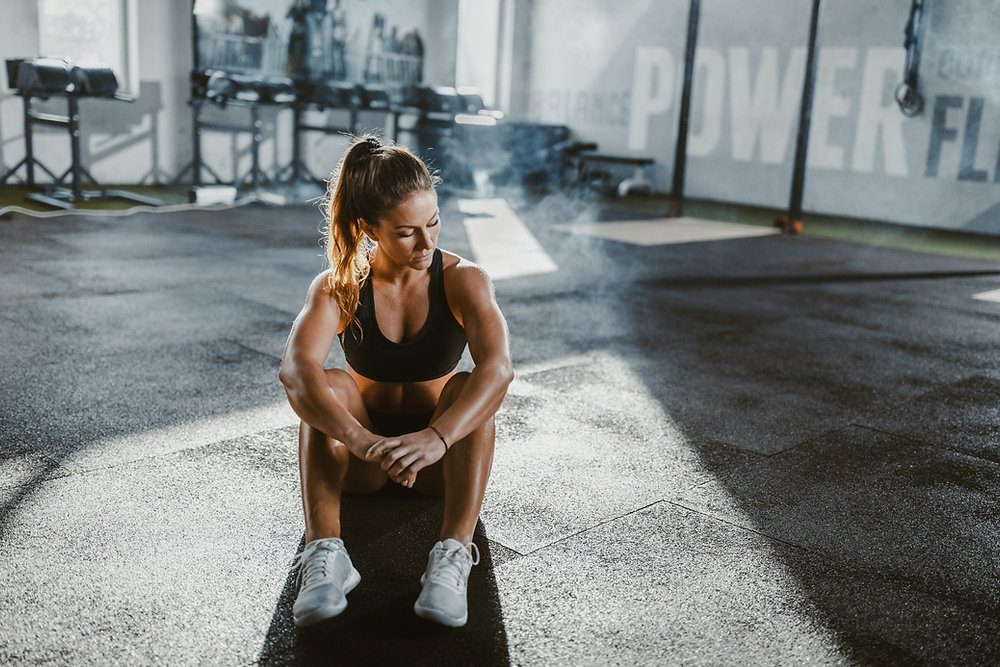Skater lunges are dynamic exercises that mimic the movements of ice skaters, providing a full-body workout targeting multiple muscle groups.
Skater lunges hold significant importance in fitness routines due to their ability to enhance balance, agility, and strength, particularly in the lower body. By engaging muscles in a lateral movement pattern, they offer functional benefits that translate into improved athletic performance and everyday activities.
We are here to provide a comprehensive guide on how to perform skater lunges effectively, including step-by-step instructions, variations, integration into fitness routines, and tips for maximizing results. Whether you're a beginner looking to add diversity to your workouts or an experienced athlete aiming to take your training to the next level, this guide aims to equip you with the knowledge and techniques necessary to master skater lunges.
Understanding Skater Lunges
A. Definition and Biomechanics Skater lunges involve a lateral movement pattern where one leg crosses behind the other while simultaneously bending the knees into a lunge position. This dynamic exercise requires balance, coordination, and flexibility. Biomechanically, skater lunges engage the lower body muscles while promoting stability through the core and upper body.
Muscles Targeted Skater lunges target a wide range of muscles across the lower body, including:
Quadriceps: The muscles at the front of the thigh are heavily engaged during the extension phase of the movement.
Glutes: Both the gluteus maximus and gluteus medius are activated to stabilize the pelvis and support the lateral movement.
Hamstrings: The muscles at the back of the thigh work to control the descent and provide stability.
Adductors and Abductors: Inner and outer thigh muscles are recruited to facilitate the lateral movement and maintain balance. Additionally, skater lunges also engage muscles in the core, including the abdominals and obliques, to stabilize the torso throughout the exercise.
Benefits of Skater Lunges Skater lunges offer numerous benefits for overall fitness and athletic performance, including:
Improved Balance and Coordination: The lateral movement challenges balance and proprioception, enhancing overall stability.
Increased Lower Body Strength: By targeting multiple lower body muscles simultaneously, skater lunges help build strength and power.
Enhanced Agility and Athletic Performance: The dynamic nature of skater lunges mimics movements commonly used in sports and daily activities, improving agility and athleticism.
Functional Fitness: Skater lunges promote functional movement patterns that translate into improved performance in everyday tasks and activities.
Cardiovascular Conditioning: Performing skater lunges at a brisk pace can elevate heart rate, providing cardiovascular benefits in addition to strength and flexibility gains. Overall, skater lunges are a versatile exercise that can be adapted to various fitness levels and goals, making them a valuable addition to any workout routine.
Getting Started
Warm-up Exercises Before diving into skater lunges, it's essential to properly warm up your body to prevent injury and optimize performance. Incorporate dynamic movements such as:
Joint rotations: Perform gentle rotations of the ankles, knees, hips, and shoulders to lubricate the joints and improve mobility.
Cardiovascular activity: Spend 5-10 minutes engaging in light aerobic exercises like jogging, jumping jacks, or cycling to elevate heart rate and increase blood flow to the muscles.
Dynamic stretches: Include dynamic stretches like leg swings, arm circles, and torso twists to improve flexibility and prepare the muscles for movement.
Proper Attire and Equipment Dress in comfortable, breathable clothing that allows for a full range of motion. Avoid loose or restrictive clothing that may impede movement or cause tripping hazards. Opt for supportive athletic shoes with good traction to provide stability and reduce the risk of slipping during skater lunges. While skater lunges can be performed with minimal equipment, having a mat or padded surface can offer cushioning and protection for the knees and joints, especially if performing the exercise on hard surfaces.
Safety Precautions Prioritize safety to prevent injuries while performing skater lunges. Some key safety precautions include:
Start slowly: If you're new to skater lunges or haven't performed them in a while, begin with slow, controlled movements to familiarize yourself with the exercise and avoid overexertion.
Maintain proper form: Focus on maintaining proper alignment throughout the movement, keeping the chest lifted, shoulders relaxed, and knees tracking in line with the toes.
Listen to your body: Pay attention to how your body feels during the exercise. If you experience pain or discomfort, modify the movement or take a break to prevent injury.
Use caution on unstable surfaces: Be cautious when performing skater lunges on uneven or unstable surfaces, as this can increase the risk of slips or falls. Ensure you have adequate space and a stable surface to perform the exercise safely. By following these warm-up exercises, wearing appropriate attire, and practicing safety precautions, you can set yourself up for a safe and effective skater lunge workout.
Step-by-Step Guide to Performing Skater Lunges
Starting Position Begin by standing with your feet hip-width apart and arms relaxed by your sides. Engage your core muscles to maintain stability throughout the movement. Keep your chest lifted, shoulders relaxed, and gaze forward to maintain proper alignment.
Execution of the Movement
Initiate the movement by shifting your weight onto your right foot.
As you bend your right knee, extend your left leg behind you, crossing it diagonally behind your right leg.
Lower your body into a lunge position, bending both knees to approximately 90-degree angles. Your right thigh should be parallel to the ground, and your left knee should hover just above the floor.
Maintain a slight forward lean with your torso, keeping your chest lifted and hips square.
Push through your right foot to return to the starting position, bringing your left leg back to meet the right.
Repeat the movement on the opposite side, this time shifting your weight onto your left foot and crossing your right leg behind you.
Common Mistakes to Avoid
Collapsing inward: Avoid allowing your knees to collapse inward during the lunge, as this can strain the knee joint and lead to injury. Keep your knees aligned with your toes throughout the movement.
Overarching the back: Avoid overarching your lower back or leaning too far forward, as this can put excessive strain on the spine. Keep your core engaged and maintain a neutral spine position.
Lack of control: Focus on performing the movement with control and precision, rather than rushing through it. Avoid bouncing or jerking motions, and concentrate on maintaining proper form throughout each repetition.
Tips for Beginners
Start with shallow lunges: If you're new to skater lunges, begin by performing shallow lunges with a smaller range of motion. Focus on mastering the movement pattern before gradually increasing the depth of the lunge.
Use support if needed: If balance is a challenge, use a wall or sturdy object for support until you feel more comfortable with the exercise.
Practice proper breathing: Remember to inhale as you lower into the lunge and exhale as you push back to the starting position. Consistent breathing will help you maintain control and maximize your performance.
Take breaks as needed: If you feel fatigued or experience discomfort, take breaks as needed and listen to your body. It's better to perform fewer repetitions with good form than to push through pain and risk injury. By following these steps and tips, you can effectively perform skater lunges with proper form and technique, maximizing the benefits of this dynamic exercise.
Progressions and Variations
Increasing Difficulty As you become more proficient with skater lunges, you can increase the difficulty level to continue challenging your muscles and improving your overall fitness. Some ways to increase difficulty include:
Increasing speed: Perform skater lunges at a faster pace to elevate heart rate and add a cardiovascular challenge.
Adding a plyometric element: Incorporate explosive jumps between lunges to enhance power and explosiveness.
Increasing range of motion: Perform deeper lunges by lowering your body closer to the ground, increasing the challenge on your lower body muscles.
Incorporating Weights
To further challenge your muscles and increase strength, consider incorporating weights into your skater lunge routine. You can use:
Dumbbells: Hold a dumbbell in each hand, with your arms relaxed by your sides, to increase resistance during the movement.
Kettlebells: Hold a kettlebell in front of your chest or at your sides to add resistance and engage your core muscles.
Weighted vest: Wear a weighted vest to add resistance to your entire body, increasing the intensity of the exercise.
Advanced Variations
Once you've mastered the basic skater lunge movement, you can try advanced variations to further challenge your balance, stability, and coordination. Some advanced variations include:
Skater jumps: Perform skater lunges with an explosive jump between each lunge, emphasizing power and agility.
Single-leg skater lunges: Perform skater lunges while balancing on one leg, challenging your stability and strengthening each leg individually.
Skater lunge with rotation: Add a rotational element to the movement by twisting your torso toward the front leg as you lunge, engaging the obliques and adding a dynamic twist to the exercise.
Alternative Movements
If you're looking for alternative movements that target similar muscle groups, consider trying:
Side lunges: Step out to the side, bending one knee while keeping the other leg straight, then return to the starting position.
Curtsy lunges: Cross one leg behind the other in a diagonal motion, bending both knees into a lunge position, then return to the starting position.
Reverse lunges: Step back with one leg, bending both knees into a lunge position, then return to the starting position.
Bulgarian split squats: Elevate one foot on a bench or platform behind you, then lower into a lunge position with the front leg, keeping the back foot elevated throughout the movement. Incorporating these progressions, variations, and alternative movements into your skater lunge routine can help keep your workouts challenging and effective, allowing you to continually progress and improve your fitness level.
Integrating Skater Lunges into Your Fitness Routine
Frequency and Sets To effectively incorporate skater lunges into your fitness routine, aim to perform them 2-3 times per week, allowing for adequate rest between sessions. Start with 2-3 sets of 10-12 repetitions per leg, gradually increasing the number of sets and repetitions as your strength and endurance improve.
Combining with Other Exercises
Skater lunges can be combined with other exercises to create a well-rounded workout that targets multiple muscle groups and fitness components. Consider pairing skater lunges with:
Upper body exercises: Alternate sets of skater lunges with exercises such as push-ups, rows, or shoulder presses to create a full-body workout.
Core exercises: Incorporate core exercises like planks, Russian twists, or bicycle crunches between sets of skater lunges to engage your core muscles and improve stability.
Cardiovascular exercises: Add bursts of cardiovascular activity, such as jumping jacks, mountain climbers, or high knees, between sets of skater lunges to keep your heart rate elevated and increase calorie burn.
Sample Workout Routines
Here are two sample workout routines that incorporate skater lunges:
Routine 1:
Warm-up: 5-10 minutes of dynamic stretches and light cardio.
Strength Circuit:
Skater Lunges: 3 sets of 12 repetitions per leg
Push-ups: 3 sets of 10 repetitions
Bent-over Rows: 3 sets of 12 repetitions
Plank: 3 sets of 30 seconds
Cardio Intervals:
Jumping Jacks: 3 sets of 30 seconds
Skater Lunges: 3 sets of 12 repetitions per leg
High Knees: 3 sets of 30 seconds
Cool-down: 5-10 minutes of static stretching.
Routine 2:
Warm-up: 5-10 minutes of light cardio and dynamic stretches.
Superset:
Skater Lunges: 3 sets of 10-12 repetitions per leg
Shoulder Press: 3 sets of 10 repetitions
Circuit Training:
Curtsy Lunges: 3 sets of 12 repetitions per leg
Renegade Rows: 3 sets of 10 repetitions per arm
Russian Twists: 3 sets of 15 repetitions per side
Finisher:
Skater Jumps: 3 sets of 15 seconds
Cool-down: 5-10 minutes of static stretching.
Tips for Maximizing Results
A. Focus on Form over Speed Prioritize proper form and technique during skater lunges to ensure effective muscle engagement and reduce the risk of injury.
B. Listen to Your Body Pay attention to how your body feels during skater lunges. If you experience pain or discomfort, adjust your technique or reduce the intensity to prevent injury.
C. Stay Consistent Consistency is key to seeing results with skater lunges. Incorporate them into your fitness routine regularly and make gradual progress over time.
D. Importance of Recovery Allow your muscles time to recover and repair between skater lunge workouts. Get adequate sleep, stay hydrated, and incorporate rest days into your routine to prevent overtraining and promote optimal performance and recovery.
Conclusion
Recap of the Benefits of Skater Lunges
Skater lunges offer a myriad of benefits for individuals of all fitness levels. By incorporating this dynamic exercise into your routine, you can:
Improve balance, agility, and coordination
Strengthen lower body muscles, including the quadriceps, glutes, and hamstrings
Enhance cardiovascular fitness and burn calories
Increase functional strength and mobility for daily activities and sports performance
Add variety and excitement to your workout routine
Whether you're a seasoned athlete or just starting your fitness journey, skater lunges provide a versatile and effective way to challenge your body and achieve your fitness goals. Don't be intimidated—take the leap and give skater lunges a try. With proper technique, dedication, and consistency, you'll soon reap the rewards of this dynamic exercise.
Skater lunges are more than just a workout—they're a fun and dynamic way to improve your overall fitness and athleticism. By focusing on proper form, listening to your body, and staying consistent, you can maximize the benefits of skater lunges and take your fitness to new heights. So lace up your shoes, grab a mat if needed, and get ready to lunge your way to a stronger, fitter you!
Publisher: Source link







